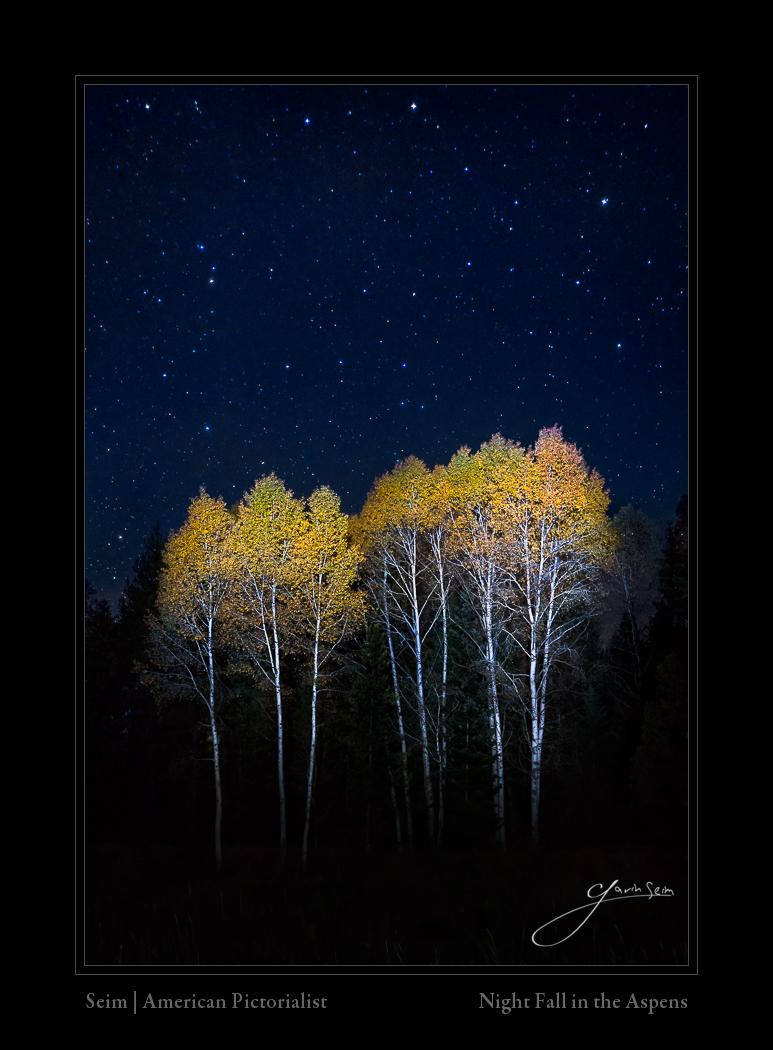Deep night sky and Autumn Aspens lit with a flashlight. Sony A7R II, ISO 6400, 13 sec, f3.5, Canon 24mm TSe II. Power Workflow 5 Presets.
My top night photography tips:
- Setup slowly and carefully on tripod before you shoot. In daylight if possible.
- With stars decide on deep field or star trails, then visualize everything else.
- Use a timer or cable release so as not to have any camera shale from button pressing.
- Long exposure noise reduction generally helps your final image.
- When light painting run some test shots and plant your best light strokes.
- Metering is hard at night, but use your histogram to make sure you’re using the tonal range well.
I found this spot up in North Washington. In the day it was a plain aspen grove that was a bit weak. But I thought, this will all change under the stars. So I used a basic LED flashlight with a zoom head. That way I could get a bit of focus on the light. I have much bigger lights but at this ISO they washed out the Aspens as I wanted to gear the light towards the top.
Initial setup is important. You’ll likely have to experiment to get the flashlight just right and you don’t want to hassle with comp or focus at that point. Get that first. I setup neat camp before it was dark and then left the camera waiting. It can be done in full dark with high ISO test images, but setting up in the light make things much easier and you can really think about your composition and visualize.
If I want deep field like this, rather than star trails, I try to keep exposure 8-16 sec. If going for Star trails I want to extend out to 30 minutes or more. A camera that can handle high ISO is important for the shorter exposures. If you are doing longer star trails, you can dial back to ISO 200 or so and open up the shutter in bulb for 30 minutes or more like I did in 140 Minutes of Night. Of course everything changes if you have bright moonlight.
The key here was a balance between the trees and sky. I wanted the Aspens at Zone 6-7, but metering under these conditions is not so easy so I made a visualization in my head and then used histogram and previews to dial in the result (see the EXposed workshop for more on light).
Night exposes different from day. Post processing needs to be deliberate. I stay with the RAW file until the end. In night scene I’ll usually have to dial up the lights and white, but have to be careful not to blow anything out. I’ll generally start with presets and then dial it in. At the end I’ll do details in Photoshop.
There’s nothing like the Autumn; all of nature pauses, shining in all it’s radiance to give glory to God. The detail is great and this will print beautifully for gallery.
— Seim


Thankyou for so many beutiful photos
Thank you so much for your tips. It is already winter in Colorado but I am looking forward to finding some winter shots with light painting. Also looking forward to not overexposing the snow excessively.
May I ask a newbie Question? When light painting, do you sweep the beam across the subject. Or do you just hold it on the subject for a specified amount of time?
Thanks…..
Hey Carrie. I try to keep the beam moving to it’s all smooth. Like keeping a soft edge on a paintbrush.